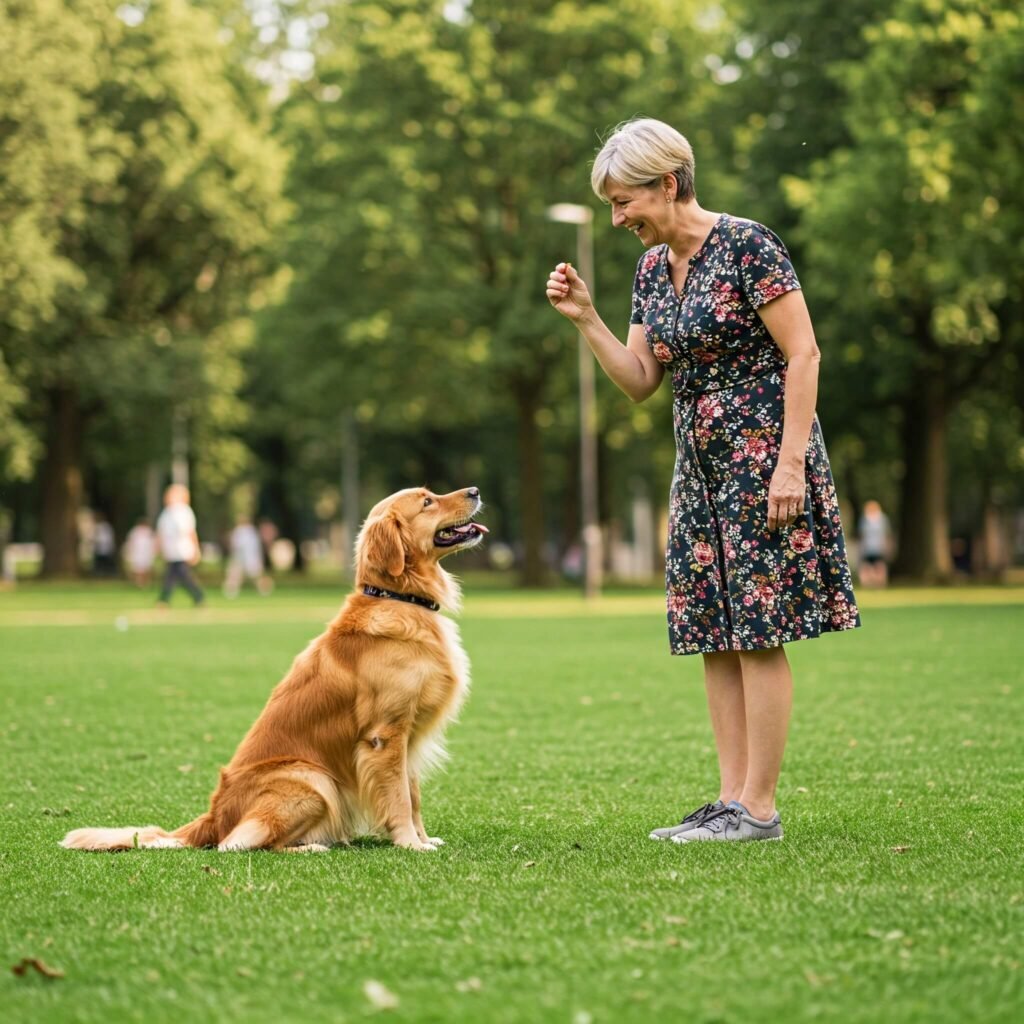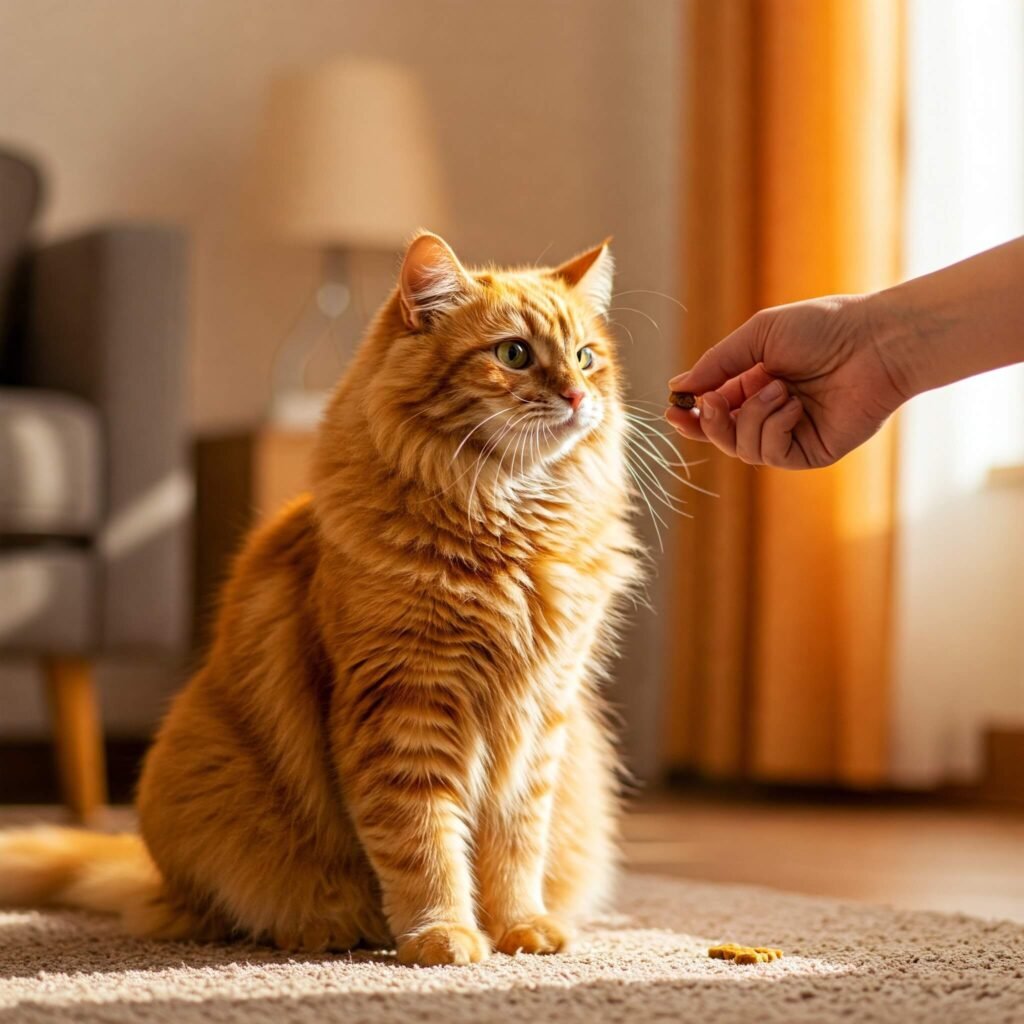Why Pet Obedience Tips Are Crucial
Obedience training shapes your pet’s behavior, reducing issues like barking or scratching that can strain your relationship. Over 20% of pet surrenders stem from behavioral problems, per the American Society for the Prevention of Cruelty to Animals (ASPCA){target=”_blank” rel=”noopener”}. Mastering pet obedience tips ensures a harmonious home and a happier pet.

7 Essential Pet Obedience Tips for Pet Parents
Here are seven vet-backed tips to train your pet effectively:
1. Start with Basic Commands for Pet Obedience
Teach commands like “sit,” “stay,” and “come” to establish control and safety. PetMD{target=”_blank” rel=”noopener”} recommends 5-10 minute daily sessions for quick learning.
- Example: Sarah’s puppy, Max, mastered “sit” in a week, making walks safer.
outbound link:- Dog Training Basics
2. Use Positive Reinforcement in Pet Obedience Training
Reward good behavior with treats, praise, or play to encourage repetition. Banfield Pet Hospital{target=”_blank” rel=”noopener”} notes that positive reinforcement builds trust.
- Tip: Use small, low-calorie treats to avoid weight gain.
outbound link:- Positive Reinforcement Dog Training
3. Be Consistent with Pet Obedience Tips
Consistency in commands and rules prevents confusion. For example, always use “off” for jumping, as advised by VCA Animal Hospitals{target=”_blank” rel=”noopener”}.
- Real-World Case: Jake’s dog, Bella, stopped jumping on guests after consistent training.
outbound link:- Dog Training Tips

4. Socialize Early for Better Pet Obedience
Expose your pet to people, pets, and environments to reduce fear or aggression. The American Animal Hospital Association (AAHA){target=”_blank” rel=”noopener”} suggests socialization by 12 weeks for puppies.
- Example: Lisa’s kitten, Luna, became friendly with guests after early socialization.
5. Practice Short, Frequent Pet Obedience Sessions
Short sessions (5-15 minutes) keep your pet engaged and prevent frustration. PetMD{target=”_blank” rel=”noopener”} emphasizes frequent practice for lasting results.
- Tip: Train in a quiet space to minimize distractions.
6. Redirect Unwanted Behaviors in Pet Obedience Training
When your pet misbehaves, redirect them to a positive action, like offering a chew toy for biting. ASPCA{target=”_blank” rel=”noopener”} recommends immediate redirection to break bad habits.
- Real-World Case: Tom’s dog, Milo, stopped chewing furniture after being redirected to toys.

7. Seek Professional Help for Pet Obedience Challenges
For persistent issues, consult a certified trainer or behaviorist. AAHA{target=”_blank” rel=”noopener”} lists accredited professionals for tailored solutions.
- Cost Insight: Training costs $50-$150 per session, but pet insurance from Trupanion{target=”_blank” rel=”noopener”} may cover behavior consultations.
Actionable Steps to Apply Pet Obedience Tips
Create a well-mannered pet with these steps:
- Set a Training Routine: Dedicate 10-15 minutes daily to practice.
- Choose High-Value Rewards: Use treats or toys your pet loves.
- Involve Family Members: Ensure everyone uses the same commands.
- Track Progress: Note improvements and adjust techniques as needed.
- Consult Experts: Reach out to trainers via ASPCA{target=”_blank” rel=”noopener”} for support.
Conclusion: Transform Your Pet with Obedience Tips
Pet obedience tips empower you to raise a polite, joyful dog or cat. By starting early, using positive reinforcement, and staying consistent, you can build a strong bond and a peaceful home. Begin applying these seven tips today and watch your pet become a well-mannered companion!

